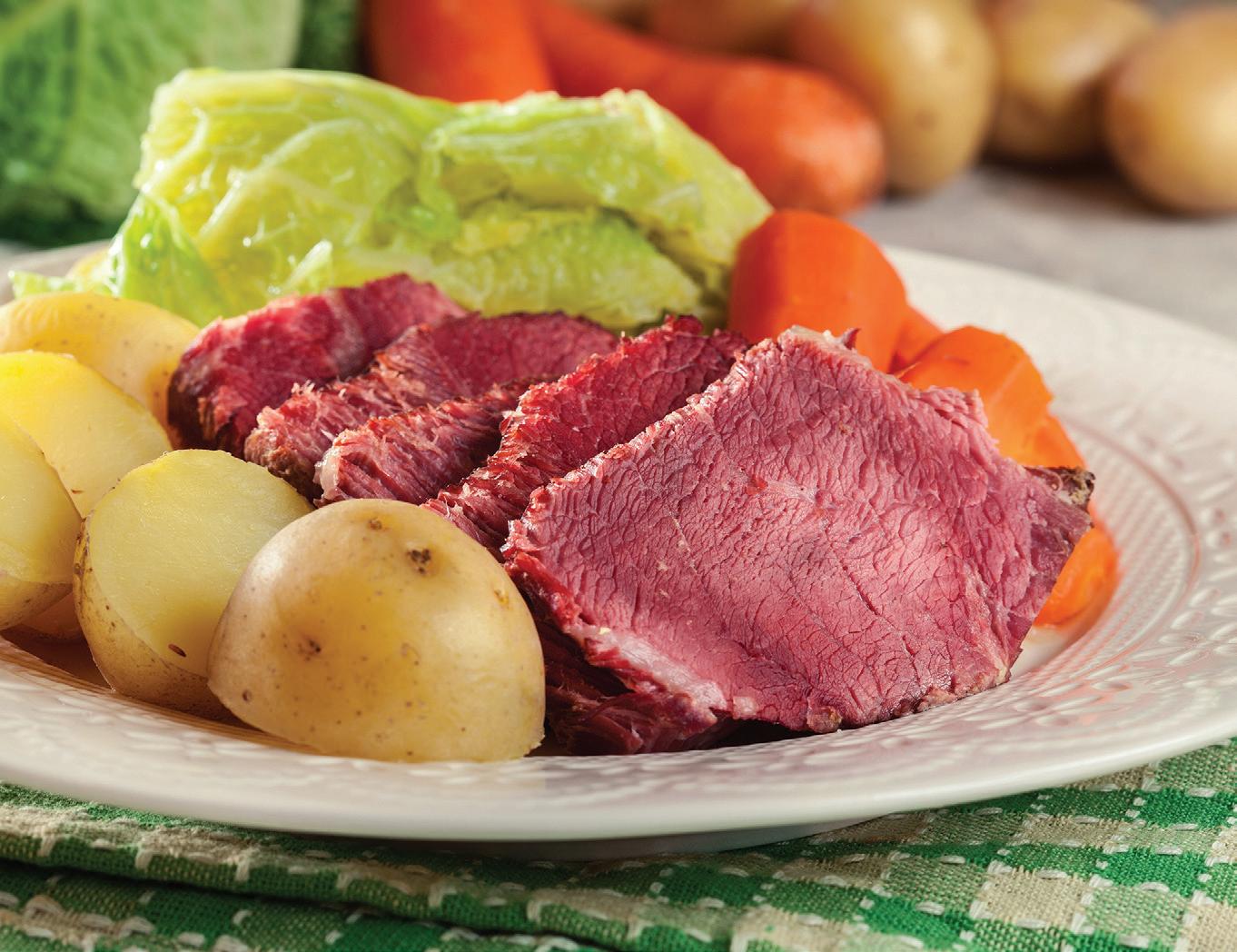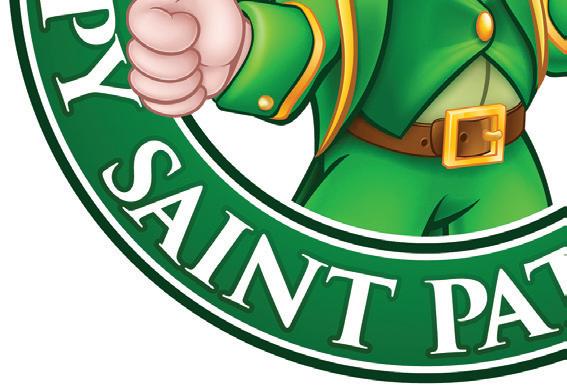
3 minute read
11 Things
STUDENT LIFE 11 THINGS ABOUT ST. PATRICK’S DAY
ANNIKA TOMLIN • COLLEGE TIMES
Green, green and more green mixed in with four-leaf clovers, green beer, corned beef and cabbage, and a lucky pot of gold. That is what comes to mind for most people when they think about St. Patrick’s Day. Here are 11 littleknown facts about the holiday.
11. FIRST ST. PATRICK’S DAY PARADE WAS IN AMERICA
Records show that the first St. Patrick’s Day parade was held March 17, 1601, in a Spanish colony in what is now St. Augustine, Florida. A century later, homesick Irish soldiers serving in the English military marched in Boston in 1737 and in New York City on March 17. Years later, the parades trot through the streets — except for COVID-19stricken 2020.
10. BLUE NOT GREEN
The fi fth-century saint’s offi cial color was “St. Patrick blue,” a light shade of sky blue rather than the infamous Kelly green color with which people associate the Irish and the holiday. It wasn’t until the late 18th century — with the Irish independence movement — that the color green became synonymous with the holiday.
9. SHAMROCK IS A SACRED PLANT
The three-leaf clover was said to have been used by St. Patrick as a visual guide to explain the Holy Trinity. The Celts used to call it the “seamroy” and deemed it a sacred plant that symbolized the arrival of spring. Today, the shamrock is considered the national symbol and emblem of Ireland.


8. USED TO BE DRY HOLIDAY
St. Patrick’s Day is a national holiday in Ireland and Northern Ireland. Prior to the 1970s, pubs were closed on the day minus the beer vendors for the national dog show. The saint’s feast day was considered a more solemn and strictly religious affair. Now the strictly religious affair. Now the country welcomes hordes of greencountry welcomes hordes of greenclad tourists for parades, drinks clad tourists for parades, drinks and limericks.
7. FOUR-LEAF CLOVER
Legend says each leaf of the clover has a meaning: clover has a meaning: hope, faith, love and luck. A fourleaf clover is rarer than people realize. It’s estimated that clover hunters have a 1 in 10,000 chance of fi nding one.
6. CHICAGO RUNS GREEN — LITERALLY
Since 1962, Chicago has been dumping green dye into the Chicago River to celebrate the holiday. Although organizers won’t reveal the specifi c formula, the dye is dispersed through fl our sifters by the local Plumbers Union. end of the rainbow was earned through hard work.
5. NO FEMALE LEPRECHAUNS
Although women may dress up as leprechauns for St. Patrick’s Day, in traditional Irish folktales, there is no such thing. The little dudes who spend their days making and mending shoes are the only ones who “exist.” In other words, the pot of gold at the
4. NO CORN IN CORNED BEEF
Corned beef and cabbage are staple dishes on St. Patrick’s Day for several Irish Americans and foodies. However, the dish has nothing to do with the grain corn. It actually goes back to the large grains of salt that were historically used to cure meats. They’re also known as “corns.” Corned beef and cabbage were an American innovation because ham and cabbage, which is normally consumed in Ireland, was normally consumed in Ireland, was too expensive. too expensive.
3. AMERICANS DRINK A LOT A LOT
St. Patrick’s Day is one of Americans’ favorite holidays, as Americans’ favorite holidays, as it’s a cheap excuse to drink green it’s a cheap excuse to drink green beer. Last year Americans were beer. Last year Americans were expected to ring up a $6 billion expected to ring up a $6 billion tab on March 17. That was until tab on March 17. That was until COVID-19 hit. COVID-19 hit.
2. ST. PATRICK WASN’T IRISH WASN’T IRISH
St. Patrick was born to Roman parents in Roman Britain in the parents in Roman Britain in the late fourth century. He is believed late fourth century. He is believed to be Irish because he introduced to be Irish because he introduced
Christianity to Ireland in the year Christianity to Ireland in the year 432 and it led to his sainthood.
1. ST. MAEWYN’S DAY
Not to burst any bubbles, but St. Patrick was not actually named Patrick. His birth name was actually Maewyn Succat, but he changed his name to Patricius after becoming a priest. Eventually, his birthdate was dubbed St. Patrick’s Day. CT




